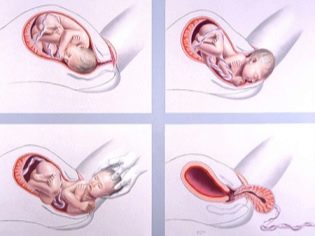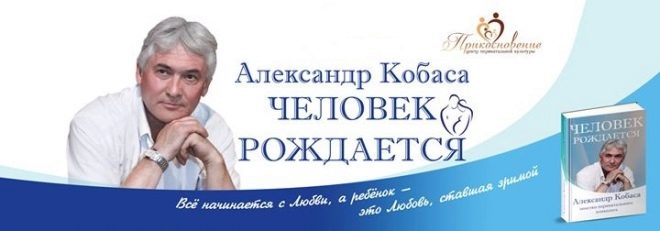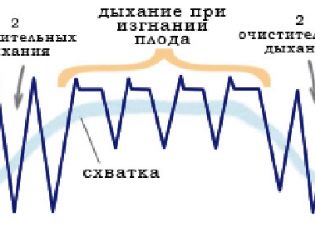How to breathe during childbirth?
In the process of life, we rarely think about the importance of breathing. We just breathe, it is a reflex, it is familiar and simple. In fact, breathing can perform much more functions than just gas exchange. In particular, certain breathing techniques can help in the treatment of serious diseases, affect the functioning of internal organs and even reduce pain. That is why during childbirth a woman is recommended to breathe properly. In this article we will tell you how to breathe properly during childbirth in order to ease your own condition and make the baby more stable.
How does breathing affect?
The fact that the way to breathe in and out affects the state of health, even children know. If you run for a long time and breathe deeply with your mouth, then you will want to sleep a lot, and if you breathe “like a dog” in short breaths, you will feel dizzy. The way of breathing can slow down or speed up not only gas exchange, but also metabolism.
With a calm, measured, moderately deep breathing, all the tissues of the body are saturated with oxygen, as a result of which they begin to work more properly, the muscles relax. This effect of respiratory techniques and methods was noticed by the doctors of antiquity. Many auxiliary methods in psychiatry, psychotherapy, and physiotherapy are based on changes in the respiratory rhythm and depth of inhalation. Obstetrician-gynecologists are also asking for breathing correctly.
Regular inhalation and exhalation can help in childbirth, because with proper breathing a sufficient accumulation of oxygen in the mother is achieved. This is an excellent prevention of hypoxia in childbirth - a condition dangerous to the baby. The child during the birth process, which is also a serious test for him, must, until the last - before the umbilical cord is cut off, receive sufficient oxygen with maternal blood.
If a woman screams and breathes as horrible, she spends oxygen, her own organs begin to experience oxygen starvation. Moreover, she can not give the right amount of vital gas for her baby.
With the right breathing technique, a woman gets some control over the state of the muscles - it is easier for her to relax, which reduces pain and speeds up the process of childbirth, because there are no muscle clamps and blockades. With sufficient blood saturation with oxygen in the body of a woman, the production of endorphins is activated, which not only have the ability to raise mood, but also are effective natural painkillers.
Proper breathing makes the attempts more effective, as a result the child is born faster and the risk of tears is reduced. The level of stress and ancestral fears in the parturient woman who breathes in the right way is much lower. As a result, the woman who gives birth has better control of her emotions, and is in better contact with the medical obstetric team.
Birth breathing techniques are part of the maternity preparation program. At various times, they were studied by various doctors and scientists. Today, all women giving birth in the world breathe according to the method of the French obstetrician Fernand Lamaze, who formulated the basics of natural anesthesia for childbirth. Also known methods Bekhtereva, Lurie - their development became a solid foundation for the Lamaz system. In Russia, breathing according to the method of Dr. Alexander Kobasy is very popular.
It is possible and necessary to get acquainted with the techniques and exercises even during the childbearing period - the basics of these techniques are taught in courses for expectant mothers, which act free of charge at every antenatal clinic.
Even if a woman does not have time to attend such classes, there are many video tutorials that you definitely need to use in order to practice.
If the expectant mother still conducts such training during pregnancy, then during the birth she will not have questions about how and when to breathe in and out.
Basic techniques
In childbirth a woman will consistently undergo several periods of labor activity - contractions, attempts, birth of the placenta. In each period, the breath will be different and pursue different goals. Before you master the inhale and exhalation characteristic of each stage of labor, you should start learning from training the ways to inhale and exhale themselves.
In everyday life, we breathe superficially, without giving it much importance. At the same time, we can breathe both with the chest and the stomach in any arbitrary order. It is not allowed to breathe in childbirth. To streamline reflex movements, you need to master the following types of breathing in stages.
Belly - while the chest remains almost motionless, only the abdomen rises on the inhale. Woman can control the process with her own hands. One of them is placed on the stomach with the palm, and the other on the chest. While a pregnant woman is watching a movie, she may well practice. The hand on the chest must remain motionless.
- Breast - Again, two palms come to the rescue, but the requirements are reverse - the chest must rise, the peritoneum must remain calm.
- Combined - Both chest and abdomen are involved in this type. Inhale - the chest rises, exhale - the belly rises, then inhale the stomach, and exhale - the chest. It is necessary to imagine that the air passes from the top down and back easily, freely, undulating. At first it will be difficult, but gradually it will work out.
- Save oxygen - This technique is useful during the laboring period of labor, when a woman will need to save air in the lungs to ensure the strength of the attempts. When training, breathing should be combined, but uneven. If normal combined breathing implies the same duration of inhalation and exhalation, then in economy mode, exhalation should be twice as long as inhalation.
- Often and fractionally - short and sharp breaths in and out of chest, lower and combined type. This method will help in alleviating contractions. Popular exercises that will help you master the technique are simple and widely known. This “dog breath”, and also “Candle” and “Big Candle.” You don’t need to tell how to breathe “like a dog”, we all know and are able to do it since childhood. "Candle" - a short breath and the same exhale (so a person extinguishes the flame of a candle). The “big candle” is a long inhalation and a series of short, sharp exhalations (this is how a person extinguishes several candles that stand nearby).
- Learning to push - this method will be an indispensable assistant of the mother in vain attempts. But you need to study it with caution. A woman should imagine that when you breathe deeply, a round balloon appears inside the chest. The task of the obstetrician team is to push the imaginary ball down to the uterus from above. Exhalation is done when there is no longer a physiological ability to hold the air inside.
These techniques can be repeated in any position of the body, at any time. Even training for 10 minutes a day will certainly have an effect. In addition, breathing exercises are very useful while carrying a baby.
Onset of labor
With the advent of the first contractions, cervical dilatation begins. Muscle clips, fear, panic in this situation can negatively affect the state of the cervix. Therefore, having found regular fights in oneself, it is best to relax, tune in a positive way and start counting contractions and breathing correctly.
The period of labor is called the first stage of labor. It, in turn, consists of a latent, active and transitional stage. In the latent stage, contractions are quite rare - they repeat about once every half hour, they are not painful. During this stage, the woman may be at home. In the maternity hospital you need to go when contractions begin to repeat every five minutes.
At home, in addition to counting the interval between contractions, you need to rest. You can walk, sit, stand, but lying is not recommended. In a vertical position, the neck opens faster under the action of the pressure of the baby’s head and gravity. Therefore, you can safely drink tea, cook soup for a spouse for a few days ahead. Do not forget to take measured and deep breaths and measured smooth exhalations.
Combined breathing at the stage of latent contractions helps the woman to maximally relax between contractions, it helps relieve stress, fear, tension. From the very beginning of the birth, the baby begins to receive enough oxygen from the placental blood.
In the course of strengthening uterine contractions, there will be a need to breathe deeper in economy mode. To control the correct temporal proportions of inhalation and exhalation, a woman needs to mentally count to herself up to three when breathing in air and up to five when breathing out. So you can breathe until the moment when it ceases to bring significant relief.
Active contractions, which will find a woman in the hospital, if she arrived on time, will require a slightly different approach to breathing. At this stage, the contractions are repeated every 3-4 minutes, they last 45-50 seconds. The uterus begins to open more intensely than before. From the woman will need knowledge of the permissible comfortable postures to facilitate the fights. At the same time, it is important to continue breathing in the oxygen saving mode.
It is recommended to “breathe” the strongest fights with short breaths with your mouth - “like a dog”, you can also begin to use the “Candle” and “Big Candle” techniques.
When contractions, it is considered quite effective to combine respiratory techniques with pronouncing the vowels “and”, “u” as you exhale. If the birth takes place with a partner, breathing is combined with partner poses for two and massage the area of the sacrum. In addition, the partner, who was previously familiarized with the rules of breathing, will be able to additionally control that the woman performs the exercises in a timely and rhythmic manner.
In transitional contractions, which lead to the maximum dilation of the cervix, the breathing technique between contractions remains economical, and during the contraction period, you can breathe shortly, abruptly, with your mouth.
The additional effect of adherence to techniques during labor is that the woman in labor focuses her attention not on the onset of another muscle spasm, not on pain, but directly on the performance of breathing exercises. The behavior of the mother becomes more calm.
When all the recommendations are followed, in most cases there is no need to use medication anesthetics, the woman copes with pain by herself.
Attempts
Attempts - an important and responsible period of childbirth. Baby begins through the open cervix to go into the genital tract. The frivolous behavior of a woman during this period, ignoring the requirements of an obstetrician can lead to spontaneous attempts and ultimately to the injury of the head, brain, cervical spine of the baby, ruptures of the cervix, genital tract, and perineum.
We have breathed the breath above. In the delivery room, where this and the next stage of labor will take place, since the beginning of the lengthy period, the woman and the doctor will be with the woman. As soon as the obstetrician gives the command to push, the woman will need to take a deep chest breath, hold her breath and “push” the rounded diaphragm of the baby out.
It is impossible to exhale sharply, since the release of the entire volume of air will make the potug itself ineffective - the baby will move only a little or remain in place. Exhale only need to smoothly.
The films often show women in labor who enter in a scream during the period of attempts. Most women accept this image as corresponding to the truth and unconsciously repeat this pattern of behavior. Especially for them we inform you: you can’t scream in the effort. This leads to a rapid loss of oxygen and strength. In addition, the cry is not combined with proper breathing. And if you choose one thing, the breath in all respects is more useful and necessary. A cry increases the likelihood of fetal hypoxia, and a child in a narrow birth canal and so has a hard time.
A cry increases the likelihood of ruptures, the lower segment of the reproductive female organ is strained during forced expiration and crying, while the upper part of the uterus (its bottom) at this moment may be in any stage of contraction.
A screaming woman can understand little of what doctors say to her. It prevents the cry not only the work of the medical staff, but also the birth of their own child.
Birth of the placenta
The final stage of labor will be the birth of the placenta. Last is usually born within half an hour - an hour. At the same time, contractions resume, but they are no longer so painful. It is necessary to have a woman in labor only a couple of times, when the placenta that has departed from the walls of the uterus begins to leave the cavity of the reproductive organ. This is also done at the command of the obstetrician. At the same time, breathing is applied.
After the birth of the “children's place”, a woman can begin to breathe arbitrarily, just as she is comfortable. Usually, in the afterbirth of labor, the specialists recommend to return again to calm and measured breathing, which the woman enjoyed during the entire latent initial period of contractions.
"According to Kobas", or the method of Alexander Kobasy
Among women, the method of the Russian obstetrician is called "According to Kobas", but it would be more correct to call it the method of Alexander Kobasy. The gynecologist, who gained wide popularity as a promoter of natural anesthesia of labor, created a large training course that will help women prepare for childbirth, including on their own. Under the Kobasy program, classes are held on the courses of future mothers.
The course is big and interesting. To tell about him in two words is quite difficult. The main expert advice for women in labor is in many ways reminiscent of the Frenchman Lamaz method, with the difference that the Russian female doctor suggested that each breathing exercise should be transferred to the account so that the woman herself would be more comfortable, and there would be fewer mistakes.
The breathing pattern of a Kobas delivery in brief looks like this.
- Onset of labor - we breathe evenly, evenly, rhythmically, with a long inhalation and a smooth long exhalation. When you inhale mentally count to four, while exhaling - too.
- With active bouts - each fight must be “met” fully armed. As soon as the uterine tension begins to “girdle”, the woman takes a slow breath in her nose and slowly and slowly, to herself, counts up to four. The output slows down and is carried out in the mode of energy-saving equipment - we consider not up to four, but up to six. At the peak of the fight we breathe often, fractionally, by mouth. If the tongue dries out, you need to touch the tip of the tongue to the sky and slightly tickle - more saliva will develop and dry mouth will immediately recede.
- Potent period - deep breaths by the mouth, air retention and pressure, directed strictly downwards. If a woman starts to straighten up, hemorrhages in the head, face skin, and eyes are not excluded. Alexander Kobasa does not recommend the use of breathing after the birth of the head.
Reviews
Reviews of respiratory techniques during childbirth are quite positive. Moreover, even those women who had no idea about the rules of breathing, but used them intuitively (in the past, they had vocal experience, for example) gave birth more quickly and painlessly.
Many who give birth claim that these respiratory techniques have a great future, because you can use such techniques not only during childbirth, but in any situation after them, for example, to quickly pull yourself together, do not start a scandal to relieve a headache and fatigue after work and even relieve toothache and abdominal pain caused by intestinal problems.
Some say that in childbirth they completely forgot what they were learning in the courses, and breathing was strayed. There are those who claim that birth pain cannot conquer any breathing and advocate for drug anesthesia.
Those who have tried the method of natural anesthesia of childbirth with the help of breathing are sure that this is the best option to give birth without drugs and injuries. The main thing - do not be lazy and prepare well even during pregnancy.
About breathing during labor, exercises with a trainer, preparing for childbirth, see the following video.































